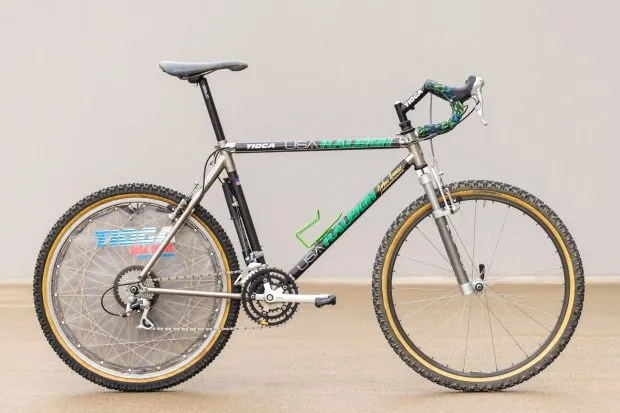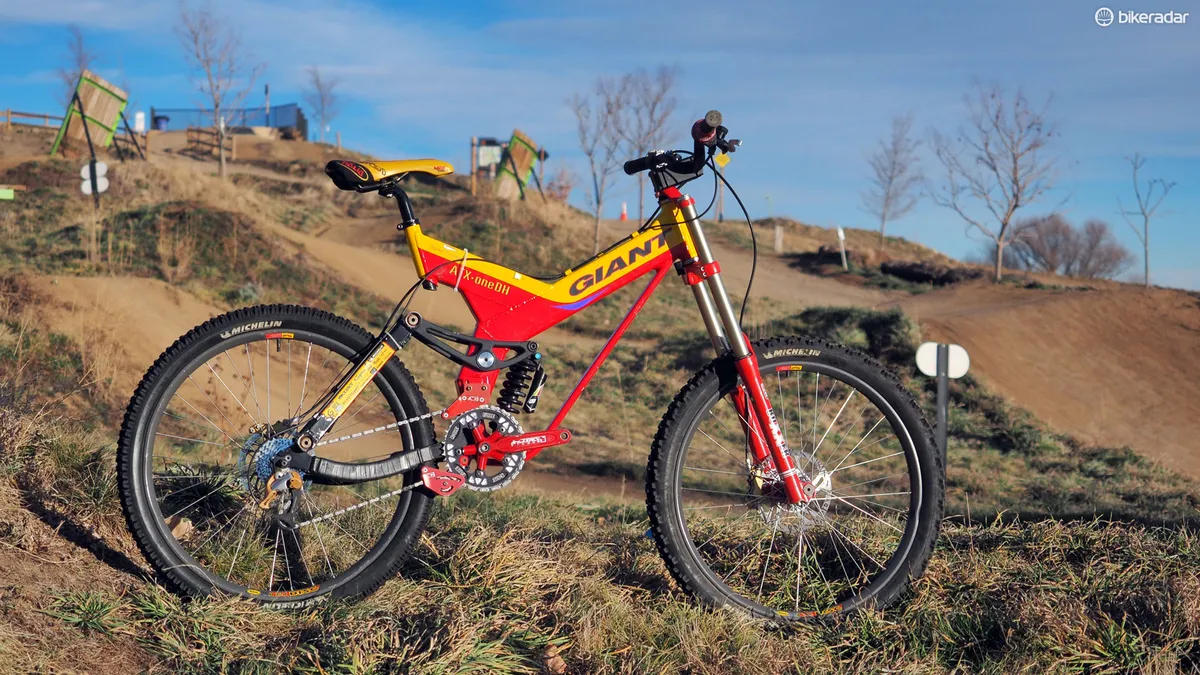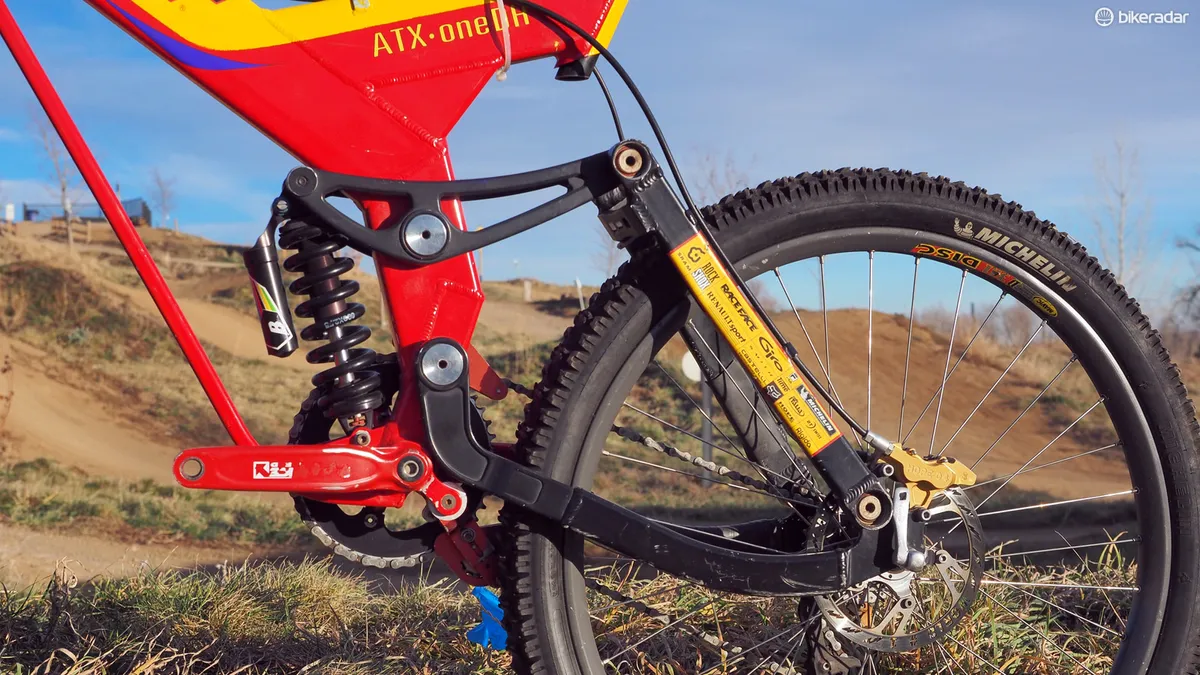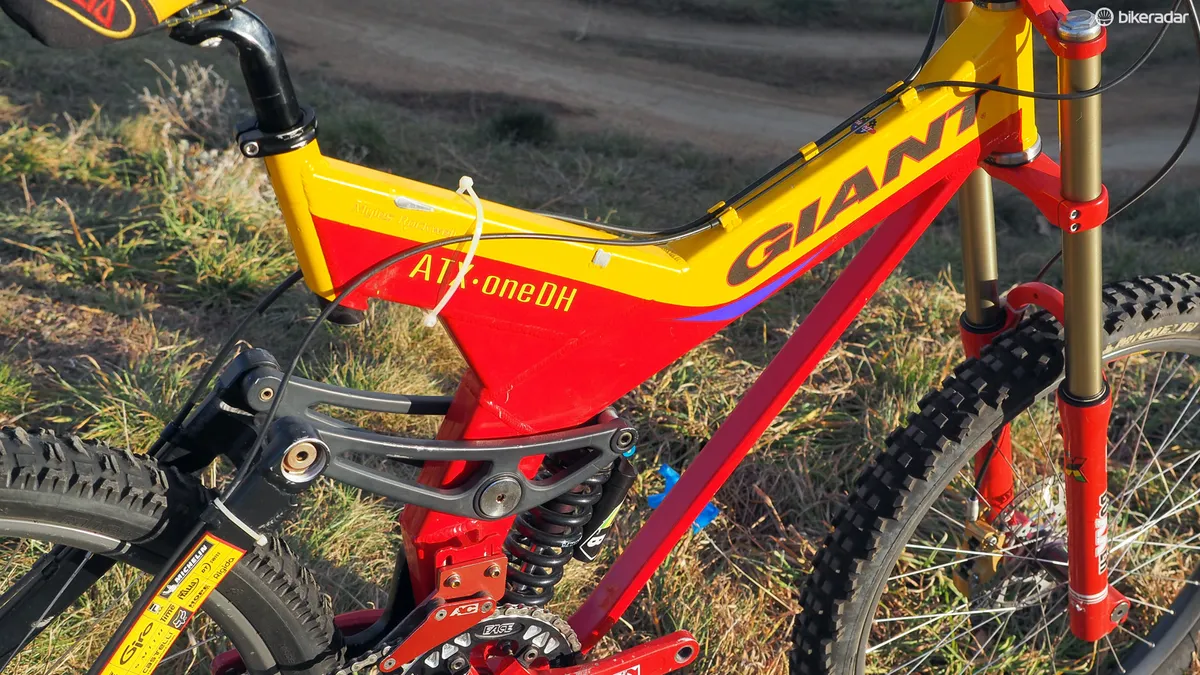Most mountain bikers have a bike in their mind that brings up heavy feelings of nostalgia. Perhaps it's the first bike you longed for after seeing it featured in a magazine, or the one you started your mountain biking journey on.
We’ve turned back time and delved deep into the early days of mountain biking to bring you four retro mountain bikes we would love to see reimagined.
While some (or all) of these might be new to you, their mix of timeless character and cutting-edge innovation is sure to get you excited.
Raleigh John Tomac Signature

John Tomac was a star of the American mountain biking scene in the 80s and 90s, featuring on countless magazine covers around the world.
Tomac’s most successful year of international racing was 1991, seeing him take home the title of GRUNDIG World Champion as well as the gold medal at the XC World Championships.
The bike he piloted is our first retro pick, the legendary 1991 Raleigh John Tomac Signature. Produced as an entirely custom build, only around 10 of these frames were ever created.
The Raleigh featured a Merlin-made titanium head tube and rear triangle, which were bonded to Easton C9 carbon-wrapped aluminium tubes.
The manufacturing process was unique and way ahead of its time, sharing distinct similarities with the bonded titanium and carbon frames found on cutting-edge contemporary downhill race bikes from Specialized, Pivot and Atherton Bikes.
The rest of the bike was decked out with a drool-worthy build, featuring a full Shimano XT groupset, a Tioga Tension Disk and Manitou fork.
At the time, Tomac was racing both on- and off-road so, to keep his riding position consistent, he ran a drop handlebar for the first mountain bike races of the year.
With its short-travel fork and drop handlebars, the signature Raleigh almost resembled a modern gravel bike and, while Tomac went on to ride it with a flat bar, we’d love to see a gravel interpretation of this classic bike.
Klein Mantra

With its single, horizontal top tube and unified rear triangle, there’s a reason the Klein Mantra was left in the past.
However, despite the shortcomings of its design, the 135mm-travel Mantra was a much lusted-over bike in the late 90s.
The Mantra impressed with a low weight, despite its long travel. However, while it looked impressive on paper, it under-delivered on the trails.
In fact, the Mantra was such a flop to ride that we included it in our list of eight mountain bike tech fails their manufacturers wish you’d forget.
The Mantra’s downfall lay in its unified rear triangle. While the pedalling efficiency was impressive, if not exactly smooth, the bike’s descending manners were undoubtedly poor.
Due to the suspension design, which saw the cranks mounted to the rear triangle, every bump on the trail was transferred directly into the rider’s feet, making for an uncomfortable and uncontrollable ride.
Furthermore, the Mantra’s super-high pivot created huge movements in its wheelbase as the suspension cycled through its travel.
As the suspension moved to absorb impacts from the trail, the wheelbase would lengthen and contract considerably, with heavy braking putting the rider in particular danger of the bike scissoring in half and launching them over the bar with little warning.
While we’d certainly leave the unified rear triangle in the past, we’d love to see Klein making a comeback with a modern 135mm-travel Mantra.
Sunn Radical+
As long-term superfans of downhill racing, this list wouldn’t be complete without the Sunn Radical+.
As one of the most successful downhill bikes of all time, the Sunn was piloted by the likes of Nico Vouilloz, Anne-Caroline Chausson, Cédric Gracia and Sabrina Jonnier, racking up countless World Cup and World Championship wins in the process.
The particular bike we’d love to see reimagined is none other than Vouilloz’ split top-tubed Sunn Radical+, on which he won the 1997 World Championships.
Designed by Olivier Bossard, the bike was made entirely from Columbus steel and featured a distinct square profile, reminiscent of early motocross bikes.
The shock and main pivot were housed in a split seat tube – a design we’re seeing more and more of in the latest crop of downhill race bikes.
The bike’s build was just as bespoke as the frame itself, sporting custom Bos suspension crafted by Bossard himself. Up-front, the 170mm Obsyss fork one-upped the competition by 20mm and the rear wheel was controlled by a highly tunable 180mm coil shock.
All in all, the Radical+ was miles ahead of its time in terms of performance, tunability and design, offering adjustable chainstays, high- and low-speed compression adjustment and an adjustable head angle.
We’re seeing a lot of similar tech and approaches surfacing on the current downhill circuit as brands turn to maximum adjustability, tunability and data acquisition to eke out every last millisecond on the track.
Who knows what Sunn has planned, but a modern take on the Radical+ would be sure to turn a lot of heads.
Giant ATX One DH

From one classic downhill bike to another, we’re rounding out this list with the Giant ATX One DH.
Arguably in the same league as the highly tuned and customised Sunn Radical+, the Giant ATX One DH impressed with its amazing off-the-shelf performance. It delivered a world-class ride to anyone who could afford to buy one.
At the World Cups, the ATX One DH was piloted by the likes of Rob Warner, Crawford Carrick-Anderson and Myles Rockwell between 1998 and 2000.

The Giant was ready to rip straight out of the box, featuring the same build kit as seen on the World Cup circuit.
The frame sported 150mm of rear travel, which was controlled by RockShox suspension.
The brakes and hubs came courtesy of Hope, and the rest of the bike was finished with Tioga components and class-leading rubber from Michelin.

It wasn’t just the build that caught the eyes and hearts of downhill lovers across the globe. The iconic red, yellow and blue paintjob looked both bold and sleek and gave the Giant a distinctive, timeless look.
In a way, the spirit of the ATX One DH lives on because it was the precursor of Giant’s Glory DH bike, which is still at the pointy end of DH racing to this day.
We were stoked to see Giant paying homage to the bike that started it all, releasing the new carbon Glory Advanced in an ATX-inspired colourway earlier in the year.
